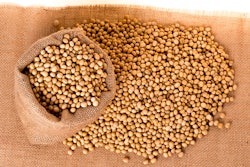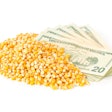Following a late-May price rally that coincided with a “cease fire” in the tit-for-tat trade tensions between the U.S. and China and a commitment by China to “ramp up” purchases of U.S. agricultural commodities, many commodity futures contracts traded at or near contract highs in 2018.
For example, new-crop corn reached a high of $4.265 per bushel on May 23 and new-crop soybeans reached a high of $10.535 per bushel two days later. Largely due to poorer than anticipated cotton crop conditions, i.e. only 42% of the crop in good-to-excellent condition as of June 10, new-crop cotton futures reached a high of 95.2 cents per pound on June 11.
By mid-June, shortly after Commerce Secretary Ross returned from China, the trade tensions had not only resumed, but they intensified. On June 15, the U.S. announced a 25% tariff on $50 billion worth of Chinese products and China responded quickly by releasing version 2 of the 301-probe list capturing 90% of U.S. agricultural exports to China (The Never-ending Retaliatory Tariff Exchange, China Edition). When, three days later, on June 18, the U.S. announced plans to identify $200 billion in Chinese goods to target for tariffs, commodity prices plummeted.
At closing on June 19, many futures contracts traded to contract or multi-year lows, in large part due to the combination of favorable growing conditions and mounting trade tensions. New-crop corn and soybean futures fell to their lowest levels of the year at $3.755 and $9.11 per bushel, down 51 cents and $1.42 per bushel, respectively. Kansas City wheat futures fell to $4.83 per bushel, down from $5.56 in mid-May, a loss of 73 cents per bushel. Cotton fell to 83.3 cents per pound – but likely is finding support due to poor crop conditions and the potential impact on the crop size. Finally, pork and cattle also fell slightly on news of escalating trade tensions, but remain above their mid-May futures contract values.
The escalating trade tensions have had an impact on the futures contract and cash values for a variety of crops. For farmers marketing old-crop corn, soybeans, cotton or wheat, the declining futures and cash market values could reduce farm profitability. For farmers actively attempting to market their new-crop corn, soybeans, wheat or cotton, the increased price volatility impacts their ability to manage price and revenue risk. For example, the $1.42 per bushel decline in new-crop soybean futures is equivalent to $5.9 billion on the 4.3-billion-bushel soybean crop. Similarly, the decline in new-crop corn prices is equivalent to $7.2 billion based on the projected size of the crop.

















